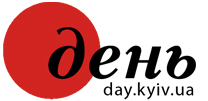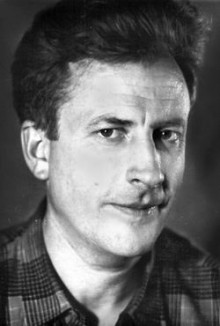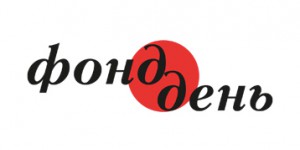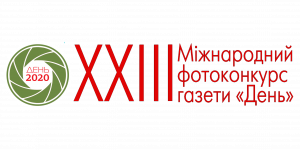Truth is sometimes stranger than fiction, as they say. The story of Svitlana Tomilina and Viktor Vasnetsov deserves to be described in a novel.
In June 1941 Svitlana, a student of a Kyiv school and daughter of the famous demographer Serhii Tomilin, joins a group of people who helped the injured soldiers who were being brought from the front. In the wards and dressing rooms of a military hospital, Svitlana, aged 16, had to face the other side of what is mentioned in the cheerful song “If tomorrow we take the field.”
Her family was unable to leave the city: Professor Tomilin underwent a hernia operation and then the city was occupied. In 1942 the new authorities opened a medical institute of sorts, and Svitlana enrolled there. However, it was just a trap for young people. Under the supervision of the new authorities students were sent to work in the field. Working in frozen stubble-covered field the young girl developed severe dermatitis.
Soon the institute was closed down and Svitlana found herself in an employment exchange. A German doctor let her stay in Kyiv for three more months before going to Germany because her legs were affected by the infection. The months went by very fast, and Svitlana had to find an official job to stay in the city. She began to work as a sales person in a earthenware store. Later she left her parents’ home and went to Lviv to continue her medical education in a medical institute there. She was very eager to become a doctor, but it never worked out for her.
On February 24 Svitlana was arrested by SMERSH (Death to Spies, Soviet military counterintelligence). The reason was that a friend of Svitlana introduced her to some young people from Yugoslavia who were in Lviv at the time. They were talking about a “democratic republic” and somebody reported the freethinkers to the police.
She was first put into a prison ward in a detention facility on Lonsky Street and then transferred to Kyiv. After the investigation was completed, she was found guilty of political activity and sentenced to eight years in labor camps. Professor Tomilin, who had created a system of sanitary statistics in the USSR, did not dishonor himself in any way, the authorities said, and was allowed to go back to his research. This had no impact on his daughter’s condition; he was able to help her only in some indirect ways.
At the time the USSR People’s Commissar for Health, I. Kononeko, described Tomilin in the following way: “As the head of the Statistics Department of People’s Commissariat for Health, Professor Tomilin was the first to start demographical research in Ukraine. He stayed in Kyiv and saved the archive of the medical departments of the university and the medical institute. He was nominated for corresponding member of the USSR Medical Sciences Academy by the academic council of People’s Commissariat for Health.”
But Tomilin never became a member of the academy and never saw his daughter again. He lived for another seven years, engrossed in selfless work. At the time Svitlana got her first camp experience, not so rough to begin with. While still in custody, she was sent to work in the Lukianivka prison hospital. The hospital was crammed with badly injured people, but this was not the worst that could have happened. L. Medved, one of the heads of People’s Commissariat for Health at the time, an honest and brave man, made the arrangements, probably out of sympathy for the family.
It is now to tell you how I met Svitlana Tomilina-Vasnetsova. A museum of medicine and medical statistics is being set up in Kyiv in one of the buildings of the municipal health department on Heorhiivsky alley. It will have a Serhii Tomilin memorial room. He was an outstanding figure in Ukraine’s healthcare system. The undertaking was initiated by Viktor Nekoval, a doctor and the head of the Department of Medical Statistics History in the Kyiv Informational and Analytical Center for Medical Statistics.
Nekoval gathered here unique materials about the noble activities of Serhii Tomilin — an outstanding researcher, whose works were used by League of Nations, an historian, and a great expert in phytotherapy.
Among the things on display I saw an NKVD document dated 1953 confirming the release of Svitlana Tomilina (although she still had the status of an exile) and a reference from the prosecutor’s office on her rehabilitation. I peered into a 1954 photo showing Svitlana and her late husband Viktor Vasnetsov, a grandson of the famous painter, at their humble wedding in Norilsk. Nekoval gave me Svitalana’s phone number and asked me to meet with her.
I came to her place in the Pechersk district. We drank tea and talked about her amazing life. Now Svitlana is 84. She did complete her education after all. In 1968 she graduated from the Department of Biology in the Taras Shevchenko Kyiv University. She also worked as a laboratory assistant, first in the Institute of Epidemiology and Infectious Diseases and then in the Institute of Oncology. She received a PhD in biology in 1973.
“I was brought to an operating unit in a prison hospital somewhere near Kyiv and asked to become, let’s say, an ‘informer’, but I refused,” recollects Svitlana. “After that I was threatened with an arrest warrant for my father, but I still didn’t give in. I realized that the consequences would be regrettable. After a few days, at night, I was sent to a transit prison, then to a camp near Krasnoyarsk, and later to port Dudinka, where I met Viktor Vasnetsov.”
Why was a talented construction engineer, and a member of a legendary dynasty at that, put into a camp?
“Vasnetsov was arrested after the May 1945 events in Prague, where he lived with his parents and graduated from a polytechnic institute. He was sentenced to many years of labor camps as an ‘emigrant enemy helper’ and was sent up north.
“Our encounter was purely accidental. In Dudinka I was again given the job of a nurse at the dock. Civilians also worked there. One evening I was teaching English to a young girl, who worked there as a record keeper, on her request. I was not very good at English myself; I just knew a couple words I had learned from a small dictionary that I happened to have. We spoke French at home. Both my mother and my father spoke it fluently.
“Suddenly I heard a polite but somewhat ironic remark about my pronunciation. It was the prisoner Viktor Vasnetsov, who had come to the dock from a special, so-called engineering, block as a technical expert to receive equipment. His expertise was in demand here, too. I noticed that Vasnetsov’s head wasn’t shaved, which was a kind of privilege for the prisoners in the special block. His command of English was perfect — he finished an English gymnasium in Prague.
“I can’t say that I fell in love with him then. In a labor camp any affection like this is utopian. But there was definitely some attraction and it united us in our thoughts. Viktor later confessed to me: ‘Right at the first moment when I saw you I was certain, despite all the vagueness of our future, that this girl would be my wife.’”
Then there were long years of separation without any hope. Svitlana was sent to Norilsk, where she worked as a laboratory assistant in a hospital—in the status of a prisoner, of course. She only knew that together with the rest of the prisoners Viktor was sent to a camp near Minusinsk to fell trees, where all ‘foreigners’ were concentrated, and then transferred to Potma. It was amazing that they received word from each other, although there was no way Svitlana and Viktor could correspond.
“In Norilsk I was asked again to become a seksot (secret informer) but I again refused. It soon had its consequences: I was transferred from the hospital to do general assignments. We had to dig a foundation pit for a pumping facility. Those who supervised the work saw that I couldn’t cope with digging frozen ground and thus slowed down the entire ‘living conveyor,’ so they made me work with a wheelbarrow. Cold and hard days came one after another. But then a flue epidemic broke out and I, just like other medical personnel, had to go back to our duties of paramedics at camp stations.”
The sentence expired in 1953. Svitlana continued to work in the hospital in Norilsk, now in the status of an exile. She had to register in NKVD department every month. Svitlana lived in a home of an old engineer, also a former prisoner, who chose to stay in Norilsk. The Stalinist atmosphere was still reigning supreme.
Somehow in 1954 Svitlana found out that Viktor worked near Norilsk in one of the so-called sharashkas (secret R&D facility where imprisoned experts worked). Svitlana and Viktor got in touch and sometimes even met. Finally Viktor was granted early release. After a few days they went to the Norilsk registry office to register their marriage but succeeded only after a second try because Viktor only had a residence permit without citizenship. After nine months a son was born to them. They named him Mykhailo in keeping with the family tradition of the Vasnetsovs. Now Mykhailo Vasnetsov, PhD in Physics and Mathematics, a talented engineer-optician, works in the Institute of Physics, the National Academy of Sciences of Ukraine. His children now continue the dynasty.
So what happened then? In the 1960s Svitlana went back to her parents’ home with all charges and limitations dismissed. However, she was given only temporary registration every time, while Viktor, a grandson of a great artist whose works are a beautiful decoration of St.Volodymyr’s Cathedral, was categorically denied registration at his wife’s place of residence.
“Once, soon after the release, Viktor was in Moscow and went to the Vasnetsov Museum,” says Svitlana, retelling her husband’s story. “He stood aside behind a piece of furniture and listened to the guide comment on the painting showing his grandfather and him. Somebody asked about the artist’s grandson’s life now. ‘He works north of the Arctic Circle,’ was a dry reply. ‘I badly wanted to shout that I am here, just near you, but I didn’t for fear of getting myself in trouble,’ said Viktor to me later.”
Time was passing by. A lawyer advised him to go to the Old Square, make an appointment with a Central Committee official, and ask for assistance in getting registration in Kyiv. His last name made a certain impression as the Vasnetsov family had made a great contribution to their country.
“They told him there: ‘We have no right to tell our Ukrainian comrades in Kyiv how they should act; they have their own legislation on housing. We can only try to give some advice.’
“A few days passed and, with a throbbing heart, Viktor went to the reception room of the regional party committee and contacted the necessary instructor by phone. This was the only possible format for ‘interviews’ with functionaries.
“‘Go to the Passport Office on Khreshchatyk’, he was told in a brusque voice. The place was packed, and most people were denied registration, often many times. But Viktor got, as he said, a pink slip of paper. This was a registration form that he had to fill out; the papers with denial were white.”
A new period of their life started. The Vasnetsovs joined a cooperative society and had their apartment built. This was possible because, apart from his job as an engineer, Viktor translated technical literature from and into Czech. In 1991 he had a stroke and died at the age of 73. In the years of their “second life” Viktor and Svitlana many times went to Prague, a city that always welcomed them.
In one of his brilliant works Serhii Tomilin mentioned a great English doctor by the name of Dover who saved a sailor from a desert island after he had been left there by the captain of his ship and spent there four years in utter solitude. Daniel Defoe’s Robinson Crusoe is based on this true story. The challenges that Svitlana Tomilina and Viktor Vasnetsov faced in their lives are, perhaps, no less intriguing.








